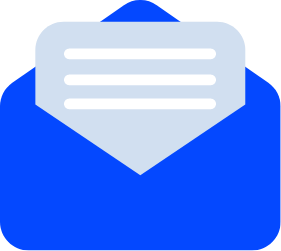


Companies are in a retention crisis. In the wake of the Great Resignation, it’s now become harder for employers to retain top talent, let alone attract new employees.
Those organizations succeeding in their battle to engage and retain staff are using a powerful weapon: their rewards program.
Benefits can be as effective as salary when it comes to retaining staff. But it’s not enough to simply make valuable rewards available. It’s also essential to educate applicants and employees about those rewards and make the reward program easy to access.
HR teams are having a tough time when it comes to employee retention. A joint study by the Society for Human Resource Management (SHRM) and Globoforce finds that retention is the leading workforce management challenge for HR teams — even ahead of recruitment.
And the best way to retain employees, according to the survey’s respondents? Recognition. More than two-thirds (68 percent) said recognition programs positively affect retention efforts.
That means HR teams shouldn’t just view recognition and rewards programs (like attractive benefits packages) as a way to lure new hires. Rewards can also increase engagement among current employees and make it much more likely they’ll stick around.
Rewards are one of the most effective ways to attract and retain talent. That’s according to research by financial technology company Blackhawk Network, which showed that younger workers increasingly see benefits as a core part of their compensation package. The study also found that rewards increase employee loyalty by 84 percent.
If you’re still not convinced on the importance of rewards, then consider the advice of Paula Morgan, quality assurance analyst at disability benefits application help provider Allsup, who names reward-related methods as two of her top five ways to retain employees.
The first, career progression, should be initiated in a top-down movement with clear tracks that are accessible to everyone on the company intranet. It should be discussed at evaluations with training provided to employees to get them to the level they need.
The second, benefit offerings, has become even more important since the pandemic. “You can create ‘lunch and learns’ on related topics like relaxation skills, meditation, yoga and healthy eating,” Morgan writes. “An Employee Assistance Program (EAP) that provides employee counseling has been a sought-after resource since the public health emergency.”
Whatever you offer, it’s essential to educate employees about the rewards they’re entitled to and how they can access them.

Why is education so important? For the simple fact that many of your employees won’t understand your current reward program.
Research by the International Foundation of Employee Benefit Plans found that almost half (49 percent) don’t understand their benefits. Worse still, 80 percent don’t open rewards-related communication.
HR teams can ill afford to let that knowledge gap persist. Helping employees understand the total value of their rewards package is essential, say strategic consultants Helen Payne and Sarah Robson at Aon. That’s because employees who don’t understand the full extent of their benefits can be tempted to change jobs for little to no increase in overall compensation.
“It can be quite alarming given the amount firms spend on benefits and rewards to how little awareness employees have of their total value,” write Payne and Robson.
Failing to help employees to understand and access their rewards also means you’re failing to fully leverage an advantage your company holds over many other employers. The fact is that most companies don’t use rewards as a retention strategy.
Joint research by Gallup and Workhuman found that 81 percent of leaders at companies in the U.S, U.K., and Ireland say that recognition isn’t a strategic priority; 73 percent of them don’t train managers on how to recognize employees. In fact, nearly two-thirds say their company has no budget for recognition programs.
When it comes to helping employees to better access and understand their rewards, few tools are more powerful than a total reward statement. Whether it takes the form of an online document or interactive platform, a total reward statement is a summary of each employee’s rewards. It shows them all of the benefits and rewards they receive, their total value, and how to access them.
One of the most helpful aspects of a total reward statement from the employee’s point of view is that it simplifies rewards-related information. At most companies, navigating rewards can be a minefield, says Chris Renz, cofounder at human resource consulting firm Nua Group.
“As companies work with different vendors to deliver employee benefit programs, in most cases there is more than one point of contact for employees to get in touch with when they want to use a benefit,” Renz writes. “Each provider has its own means of contact, a platform to book an appointment or manage their data, and other rules and requirements.”
It’s so confusing that some employers even offer navigation services to help employees through the process.
“Understanding the barriers that prevent employees from using the benefits is a crucial first step in adjusting and redesigning employee benefits programs,” he explains. “By embracing simplicity by design and streamlining employee experience, companies can create benefit programs that truly matter to employees, and are both easy to understand and use.”
Total reward statements can also combat employees’ negative perceptions of their rewards, says Tim Kellett, a director at rewards management consulting firm Paydata.
“The concept of the reward statement is to highlight every benefit of an employee’s reward package, both financial and non-financial, including bonuses, benefits and holiday entitlement,” he explains. “This offers both the employee and employer an easy-to-reference tool, which quantifies everything on offer to the employee, much of which is often overlooked.”
The result is a significant increase in trust in the employer-employee relationship, says Kellett. “If you are struggling with low staff morale, motivation, retention or engagement, total reward statements are often seen as a quick win that will have a large and noticeable impact – as long as your reward scheme is appropriate.”

Don’t rest on your laurels. If HR teams really want to use rewards as a retention strategy, then improving employee access and understanding should be just the beginning. The next step is to provide new and more personalized rewards.
It’s a matter of how rewards are structured and communicated to employees, says Becky Seefeldt, vice president of strategy at Benefit Resource. “Benefits should not be seen as a one-size-fits-all solution but rather as a personalized package that meets the needs of each individual employee,” she writes.
Because standard benefits like health insurance are a given for most employees, businesses should prioritize creating additional benefits based on employee demographics. “They might consider employees’ life stage or generation when deciding what’s important to offer them,” she suggests.
How can you make this a reality?
One way to personalize benefits is to imagine that your top employees hand in their notices and how you might change their minds, say Boston Consulting Group’s Frank Breitling, Julia Dhar, Ruth Ebeling, and Deborah Lovich. “Ask them, ‘If you could shape your dream job here what would it be?’ Then look for ways to make it happen,” they write.
“Forward-thinking organizations have been doing retention interviews for the past months — asking each employee what it would take for them to stay.”
Another strategy is to give employees more ways to leverage their skills. Separate BCG research finds that a good predictor of employee engagement is to what extent they believe their job makes use of their skills. “In short, show current employees that you value them even more than potential new hires by providing them with new opportunities to grow and advance.”
Don’t leave anything on the table when it comes to rewards. If you offer employees a stellar program of valuable rewards, make sure they know about it by making those rewards easy to understand and just as easy to access. If you already have something like a total reward statement in place, then go one step further and make access even better with a real-time platform.
Images by: Bruce Mars, Jason Goodman, Disruptivo
